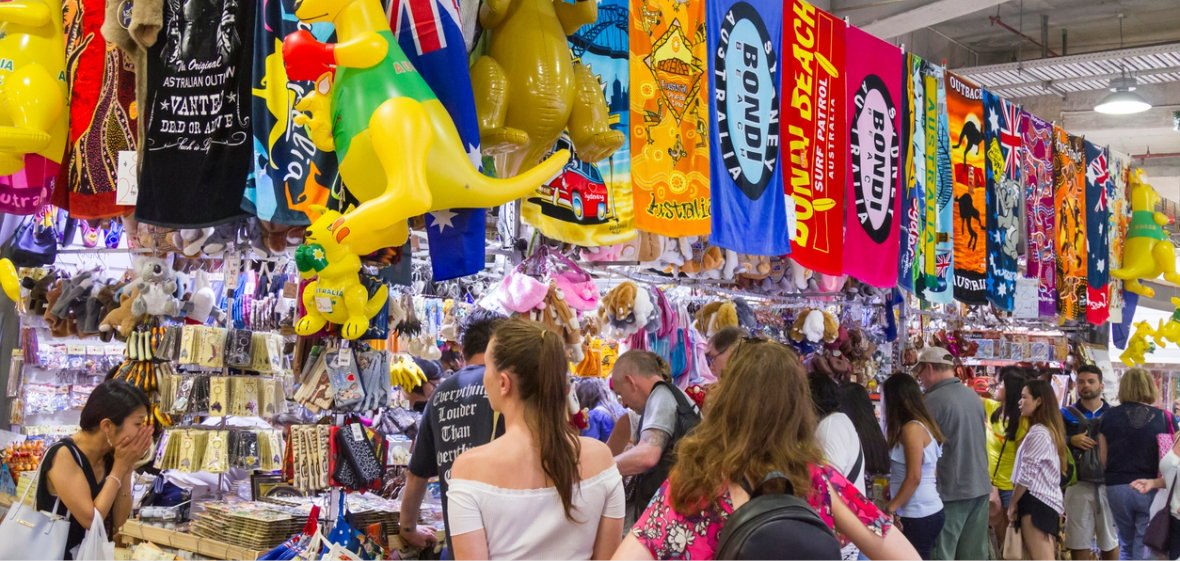New laws aimed at addressing the harm caused by fake Indigenous art, merchandise and souvenirs were first promised by the Australian Government in 2023. Since then, there’s been consultation with hundreds of stakeholders. But what form will the legislation take? How far will it go in its objective of ensuring that only art made by Aboriginal and Torres Strait Islander artists and communities, approved by traditional custodians, is created and sold?
These are questions exercising the mind of Louise Buckingham, CEO of Arts Law, Australia’s only community legal centre for the arts, as she reveals in an interview with LSJ’s podcast series Just Chat.
“[W]e know that the intention is to cover inauthentic art and artefacts, and cultural outputs,” says Buckingham. “One would hope that it will go some way to providing legal recourse, so compensation, but also a means of deterring that kind of unethical conduct in future …”

The scale of the problem has been well documented. In 2022, a report by the Productivity Commission found more than half of total spending on Aboriginal and Torres Strait Islander souvenirs in 2019-20 were non-Indigenous authored products.
In announcing stand-alone Indigenous Cultural and Intellectual Property (ICIP) legislation in 2023, the Government committed more than $13 million over four years to assist in its development. It promised a First Nations-led process and embarked on months of consultation in 2024.
In its submission, the Law Council of Australia urged those drafting the legislation to keep in mind concepts identified by Dr Terri Janke, an Indigenous lawyer and international authority on ICIP. The LCA said in her 1998 report Our Culture: Our Future, Janke referred to the importance of broad definitions. The council said rights should be recognised in perpetuity and should ensure protection of communal rights, to prevent individuals claiming exclusive ownership without informed consent.
“[F]irst Nations artists and communities are missing out on the possible ability to leverage authentic content,” says Buckingham. “[T]he cheap fake appears to the not learned consumer as being a perfectly valid alternative for a fraction of the price, when they don’t understand the cultural harm and the impact, in terms of the deprivation to community and the deprivation of a means for self-determination …”
The Office of the Arts says key themes emerged during the consultation, including overwhelming support for banning fake art and products, the need for tough penalties and to raise awareness of the legislation, along with greater financial support for communities to respond to breaches.
Impact of AI
Buckingham’s interview also encompasses the impact of generative AI on the arts, which she describes as the “challenge of the day”. Notwithstanding the opportunities presented by AI systems and tools, Buckingham says AI represents an enormous threat to copyright law, especially moral rights. “It will do so for Indigenous Cultural and Intellectual Property Rights as well …”
Buckingham says it’s left them with inadequate responses to artists concerned about their work having been used without permission. She says artists fear that “consumers and users will turn to these cheaper sources that apparently provide almost equally creative content, perhaps not understanding that the large language models have ingested and deployed existing works without necessarily compensating owners …”
She argues this undercuts the creative ecosystem the arts sector has long relied upon. “It is a big threat and it’s different to changes in the past, in terms of what the tech can do and the fact that it’s happened at a pace and is really, already beyond control.”
You can listen to the full episode of the Just Chat with Louise Buckingham here.




